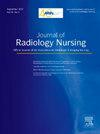Malignant Spinal Cord Compression
Q3 Nursing
引用次数: 0
Abstract
Malignant spinal cord compression (MSCC) is a structural oncologic emergency that can occur in the presence of primary or metastatic disease in the oncology patient population. The first presenting sign of this oncologic emergency is often pain. Failure to recognize early signs of MSCC can be devastating as the condition can progress to permanent neurologic damage and lead to paralysis. Understanding the underlying cause of MSCC directs the patient's treatment plan and prognosis. Diagnosing MSCC starts with a thorough assessment and health history to understand risk factors and identify signs/symptoms related to MSCC. Diagnostic imaging is key to identify the structural involvement within the spine and helps to guide the treatment plan. Patients are often managed medically, with some having surgical options as well. Additional interventions like radiation therapy may also be considered. It is important for nurses within the radiology and procedural areas to have awareness and understanding of MSCC to provide quality patient care.
恶性脊髓压迫
恶性脊髓压迫(MSCC)是一种结构性肿瘤急症,可发生在肿瘤患者群体中存在原发性或转移性疾病。这种肿瘤急症的第一个表现通常是疼痛。不能识别MSCC的早期症状可能是毁灭性的,因为这种情况可能发展为永久性的神经损伤并导致瘫痪。了解MSCC的潜在病因可以指导患者的治疗计划和预后。诊断MSCC首先要进行全面的评估和健康史,以了解危险因素并确定与MSCC相关的体征/症状。诊断成像是识别脊柱结构受累的关键,并有助于指导治疗计划。患者通常接受医学治疗,有些人还可以选择手术治疗。还可以考虑其他干预措施,如放射治疗。对于放射科和手术领域的护士来说,认识和理解MSCC对于提供高质量的患者护理是很重要的。
本文章由计算机程序翻译,如有差异,请以英文原文为准。
求助全文
约1分钟内获得全文
求助全文
来源期刊

Journal of Radiology Nursing
Nursing-Advanced and Specialized Nursing
CiteScore
0.80
自引率
0.00%
发文量
95
审稿时长
57 days
期刊介绍:
The Journal of Radiology Nursing promotes the highest quality patient care in the diagnostic and therapeutic imaging environments. The content is intended to show radiology nurses how to practice with compassion, competence, and commitment, not only to patients but also to the profession of nursing as a whole. The journal goals mirror those of the Association for Radiologic & Imaging Nursing: to provide, promote, maintain , and continuously improve patient care through education, standards, professional growth, and collaboration with other health care provides.
 求助内容:
求助内容: 应助结果提醒方式:
应助结果提醒方式:


